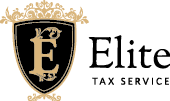Fresh off the holiday season, most Canadians are not thinking about the upcoming tax season. Here are a few things to help you stay organized so that the arrival of April doesn’t send you scrambling, trying to organize piles of paperwork.
Charitable Donations
Nothing inspires charitable giving like the holidays. Not only are you helping the needy, you are also helping yourself to tax savings. First-time donors, those who haven’t (and their spouse) made a charitable donation after 2007, can receive an additional “super credit” with your first $1,000 cash donation drawing an additional 25 per cent tax credit. This is on top of the 40 per cent tax credit you normally get. Keep receipts organized and accessible for easy filing.
Middle-Class Tax Cuts
When the Liberals came to power in 2015, they were quick to implement the middle-class tax cut proposed during their campaigns. The middle-class income tax bracket received a seven per cent reduction last year, putting up to $670 in your pocket. But if you’re a high earner (more than $202,800), remember you will be paying for these cuts by contributing 33 per cent of your taxable income.
Tax Rate
Normally, determining which tax rate applied to you is simple. The only time you need to pay particular attention is when you move between provinces. Take note of moving dates and speak to your accountant to find out which tax rate you should be filing in your returns.
Tax-Free Savings Account
Since the program began in 2009, the Tax-Free Savings Account has been a great way to save money that is not tax deductible. Capital gains made on the account are usually not taxed even when the amount is withdrawn. Don’t forget that the annual contribution limit for 2017 is $5,500.
Education and Textbook Tax Credits
The federal education and textbook tax credits were eliminated when Budget 2016 was released. The good news is that credit amounts previously unclaimed can still be claimed when filing tax returns beyond 2017. Students should also be aware that the tuition tax credit is still in effect.
Registered Education Savings Plan
Your child could have significantly reduced student loans. All parents need to do is open a Registered Education Savings Plan. The federal government will match 20 per cent of your investments up to $7,200 and depending on your home province, there may be bursaries available that contribute free money to your child’s education. Since students tend to fall into the lower tax bracket, when the time comes to make withdrawals, they likely will not be taxed.
Deadlines
As always, your return for 2016 needs to be filed on or before April 30, 2017. However, since this date falls on Sunday this year, the Canada Revenue Agency will consider returns postmarked on or before May 1, 2017. Your 2017 installments must be paid on the 15th of March, June, September and December.

